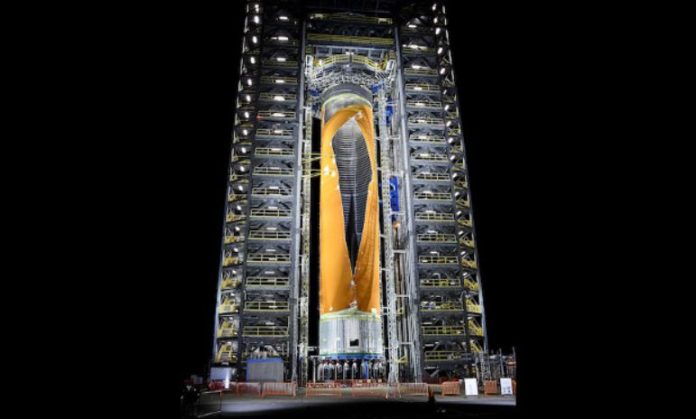NASA experts conducted another test of the main fuel tank for the SLS launch vehicle, which simulated possible overload rockets at launch. The tank was able to withstand an overload of more than 260 % of the estimated five hours before bursting into a calculated location, according to NASA’s website.
The super-heavy launch vehicle SLS (Space Launch System) is designed for manned flights and launching payloads beyond Earth orbit. The length of the main part of the rocket is almost 65 meters, and for its operation, liquid rocket engines RS-25 and solid fuel side boosters are used, which, like RS-25, are based on the technology of the Space Shuttle program.
Initially, the test flight of the rocket was scheduled for 2016, but then this date was repeatedly postponed, it recently became known that SLS will not be ready for the planned test launch of EM-1 in June 2020. Currently, testing is already underway of the already assembled base part of the SLS for unmanned launch as part of the Artemis-1 program and the creation of a second missile for launching under the Artemis-2 program.
On December 5, 2019, engineers conducted another test of the world’s largest main fuel tank, used in the design of the rocket and designed to store stock liquid hydrogen. All previous tests on the simulation of estimated loads during the rocket launch tank successfully passed without getting damaged.
In the course of the new tests, the tank was installed on a stand at the Marshall Space Flight Center, after which it was filled with gaseous nitrogen and equipped with sensors to detect the load in various elements of the tank, pressure and temperature, as well as high-speed cameras that monitored the tests. After that, the engineers launched hydraulic pistons, the action of which simulated the strong overloads that can occur when a rocket is launched.
As a result, the test version of the tank withstood an overload of more than 260 percent of the calculated one, after which the engineers found a critical place, the position of which coincided with the simulation results. Further tests led to a controlled rupture of the tank: these results confirmed both the reliability of the tank design and the reliability of the models used in its design.
